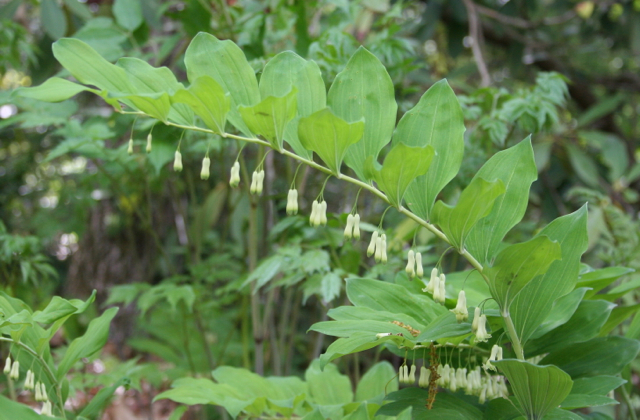


And how to use; excerpts from the article below:
>Today, however, few practitioners know how to use Solomon’s Seal anymore. In China, Huangjing never was a component of the classical materia medica (it is not mentioned in either the Shen Nong bencao jing nor the Shanghan lun), but featured prominently in Daoist alchemical texts such as the writings of Ge Hong, Tao Hongjing, and Sun Simiao. Tao Hongjing’s initial introduction of Huangjing in his 6th century Mingyi bielu (An Extraneous Record of Famous Physicians) conveys the typical Daoist flavor that has become associated with the herb since then:
When consumed for long periods of time, Huangjing will cause the body to become weightless, prolong its life span, and alleviate the need to eat food.
Modern biochemical research shows that Huangjing contains a complex array of sugars, starches, vitamins, minerals and antioxidants. At the same time, it has been identified as one of the most effective antifungal agents within the Chinese materia medica. It therefore is not surprising that the ritual imbibing of Huangjing during prolonged periods of fasting and cleansing was once a key component of Daoist hermit practice in China. Over time, many stories developed that enshrouded the medicinal properties of Huangjing in the terms of mythological lore, often associating the herb with the Queen Mother of the West (Xiwangmu), legendary ancestor of Daoist longevity knowledge, or the clairvoyant healer Hua Tuo.
One reason why Huangjing features so prominently in the esoteric arts of nourishing life in China is the pungent flavor* of the unprocessed root, linking it to the concept of yang qi and solar forces. Taiyangcao (Sun Herb) is a common nickname for Huangjing in Daoist folklore, and even its proper name Huangjing can potentially be rendered as “essence of the sun.” The Song dynasty literatus Zhu Qi once exclaimed in a poem composed after being presented with a bottle of Huangjing Wine: “The Sun Herb: nothing more potent in the scrolls of the Immortals for keeping old age at bay!”
A decoction made from processed Huangjing is sweet and nourishing, yet not as rich and sticky as a soup made from Dihuang. It stabilizes blood sugar while exhibiting anti-parasitic qualities, a rare and highly desirable feature among tonic herbs. Ginseng, in contrast, has a tendency to stimulate parasitic activity in people with latent viruses and other chronic pathogens. This particular feature makes Huangjing an excellent candidate for replacing Renshen in ginseng containing prescriptions for people who suffer from chronic fatigue, fibromyalgia and other chronic inflammatory conditions.
Touted as an adaptogenic energy tonic that helps skinny people to gain weight and a blood sugar stabilizer for obese patients who wish to eat less, it is generally stewed with chicken or pork, or immersed in alcohol with other herbs to produce Longevity Wine.
In sum, the recent flurry of Huangjing research attributes the following actions to this ancient Daoist herb:
- Strengthen physical weakness
- Stimulate weak digestive function
- Increase oxygen absorption
- Increase memory and study focus; reverse developmental issues in children
- Regulate heart rhythm
- Decrease elevated cholesterol levels
- Regulate immune function (increase low WBC count)
- Regulate blood sugar
- Counteract fungal infections
- Benefit the eyes and correct near sightedness
*The Solomon Seal species that grow in North America are not at all pungent.
Another herb related to rat root/calamus/acorus
The western solomon’s seal is used for respiratory conditions. Mostly dry, chronic lung conditions. And connective tissues issues, for tendons and ligaments that are either too tight or too loose. I suspect it is a somewhat underused herb, and likely very poorly researched.
Judging from the hype and prices Matthew Woods and possibly Samuel Thayer seem to have popularized P biflorum. I have Chinese SS “Yu Zhu” P odoratum that is like potato chips in color and texture. Must be a different process, not the same as in the article showing dark color. I like the idea of cooking with it. I have SS from USA/Mtn Rose, probably Giant SS. I have SS dug locally under maple trees, showing in my photo above, pretty small. “To presuppose and put it to the test.”-Francis Okie
Grassy Acorus aka Japanese Sweet Flag